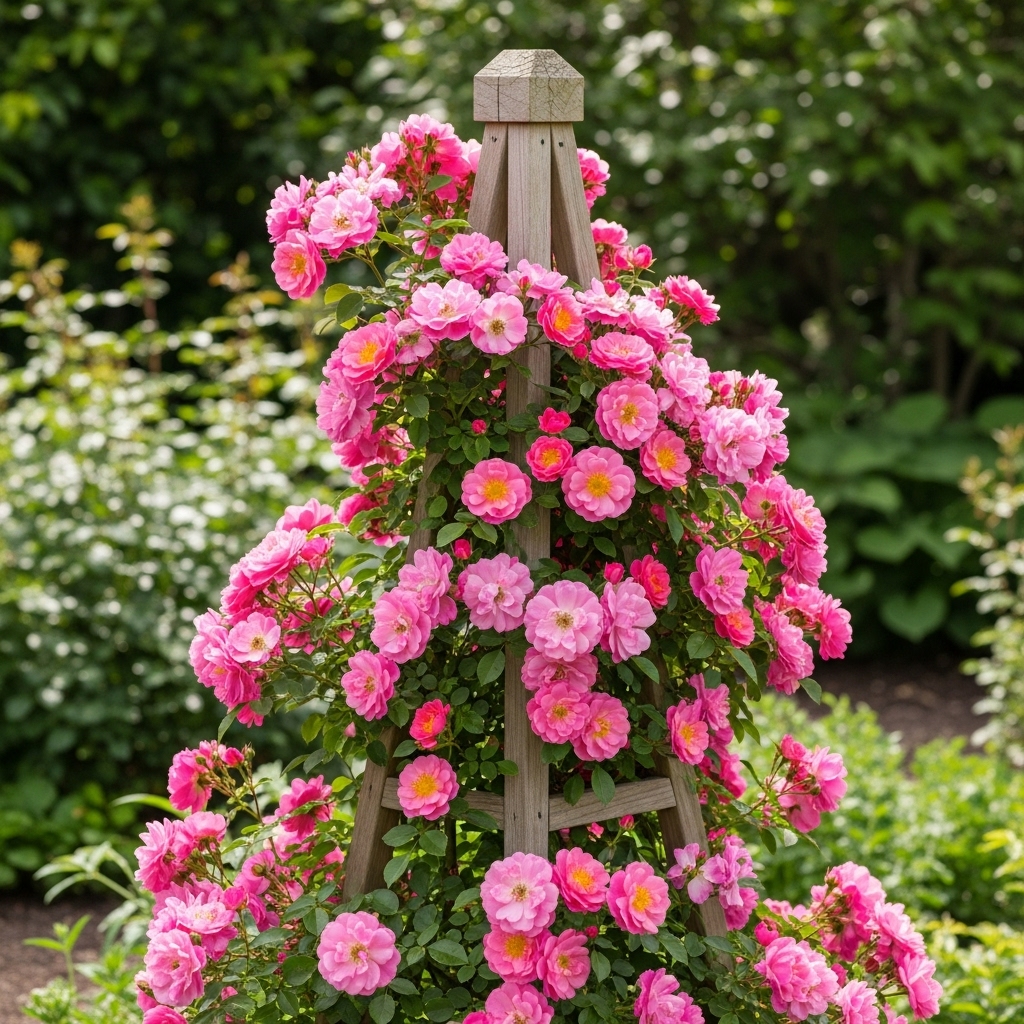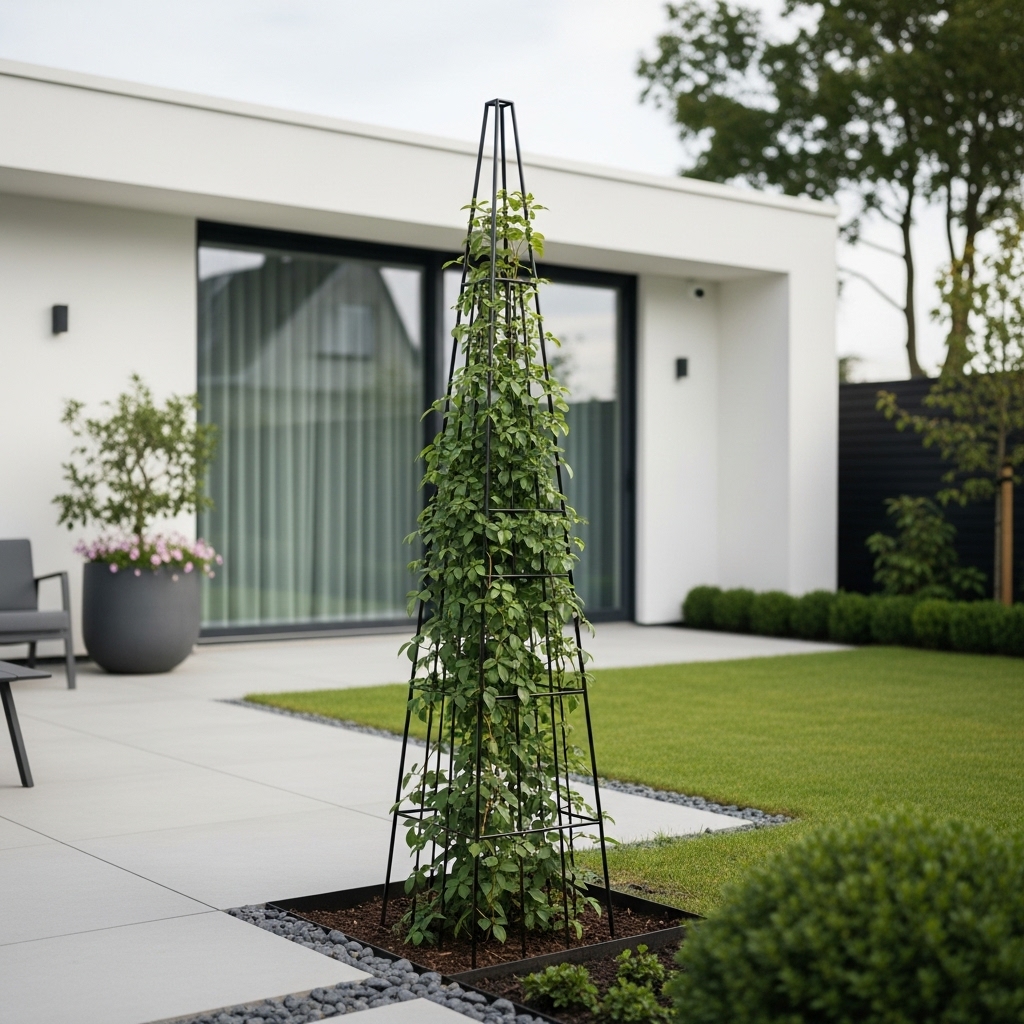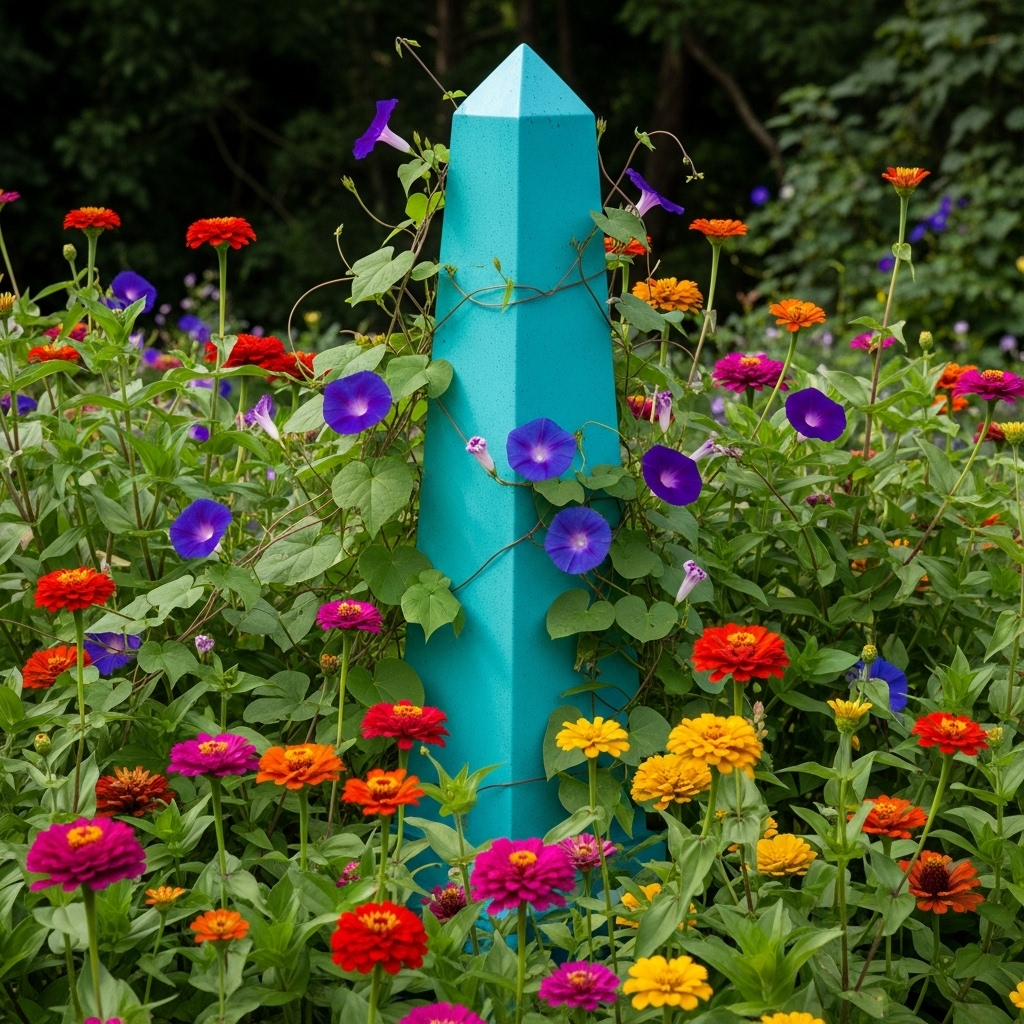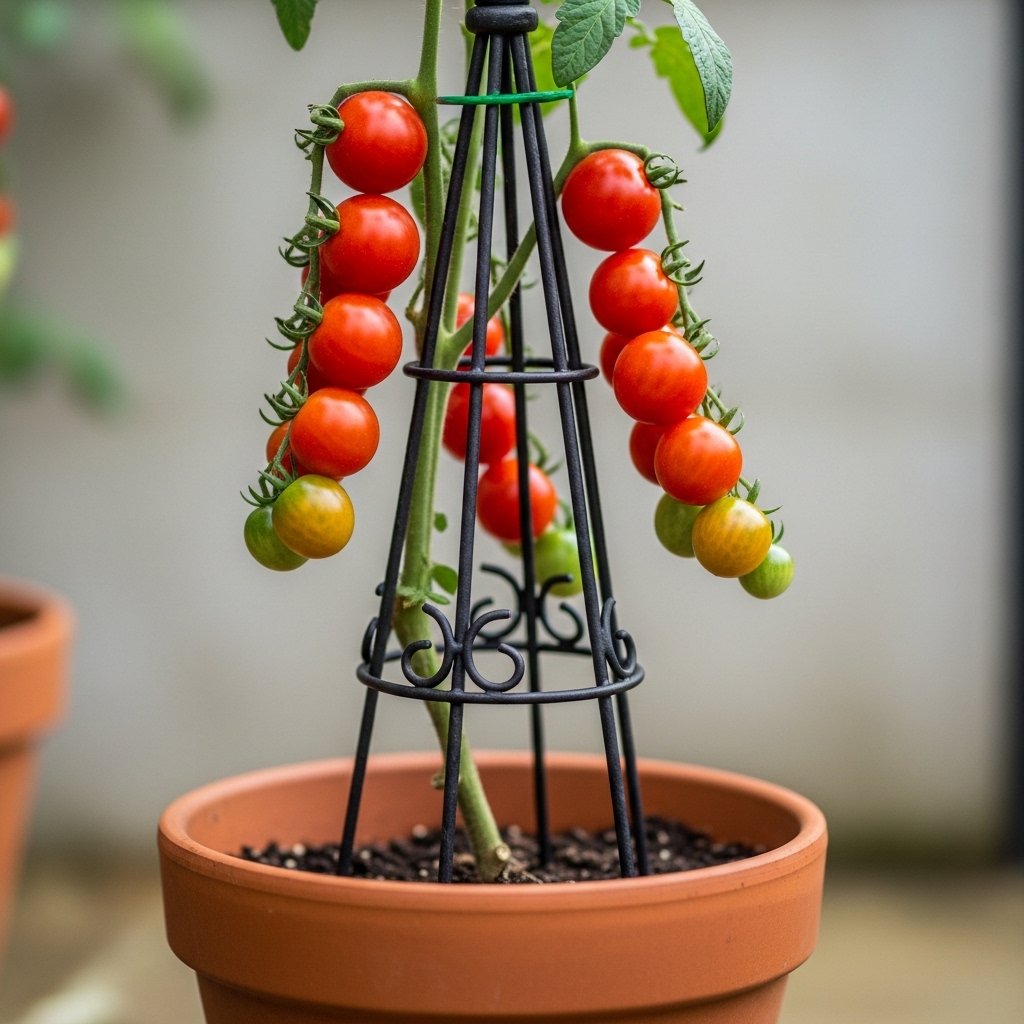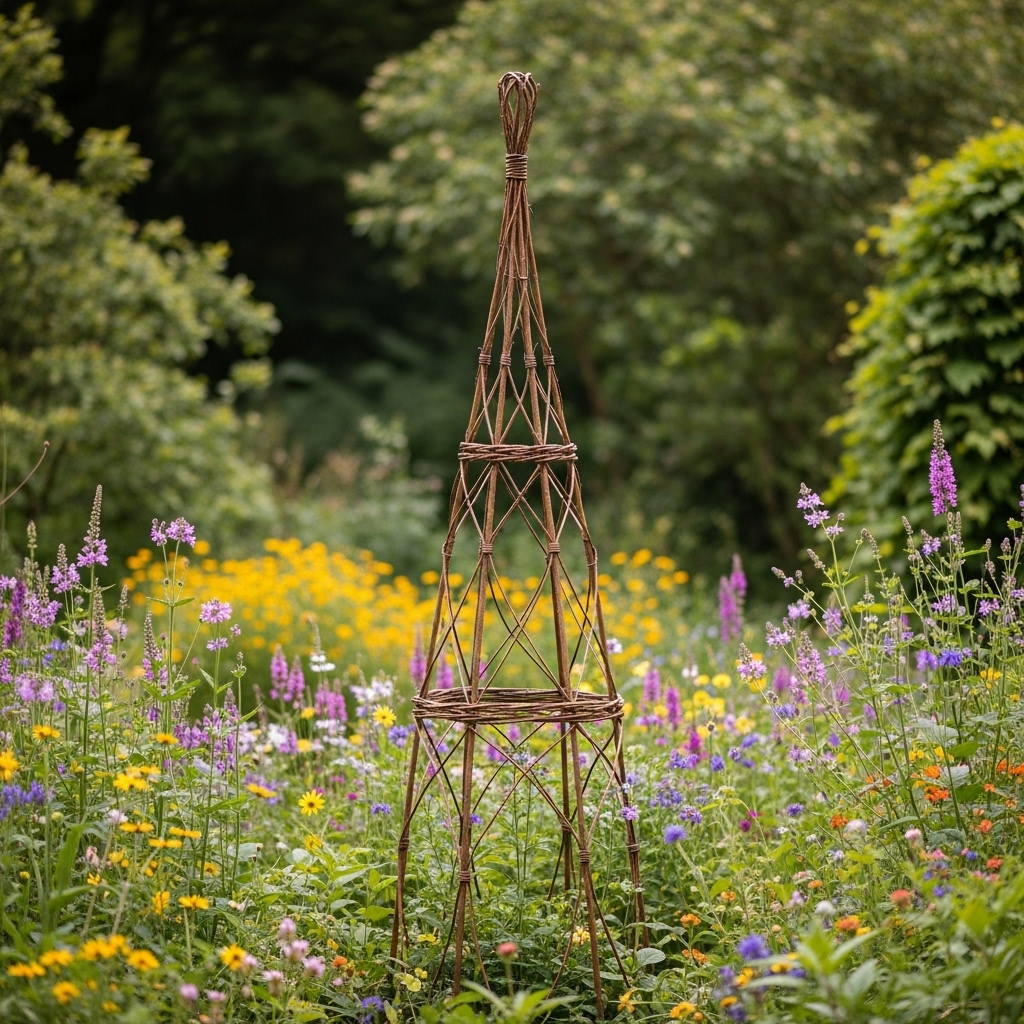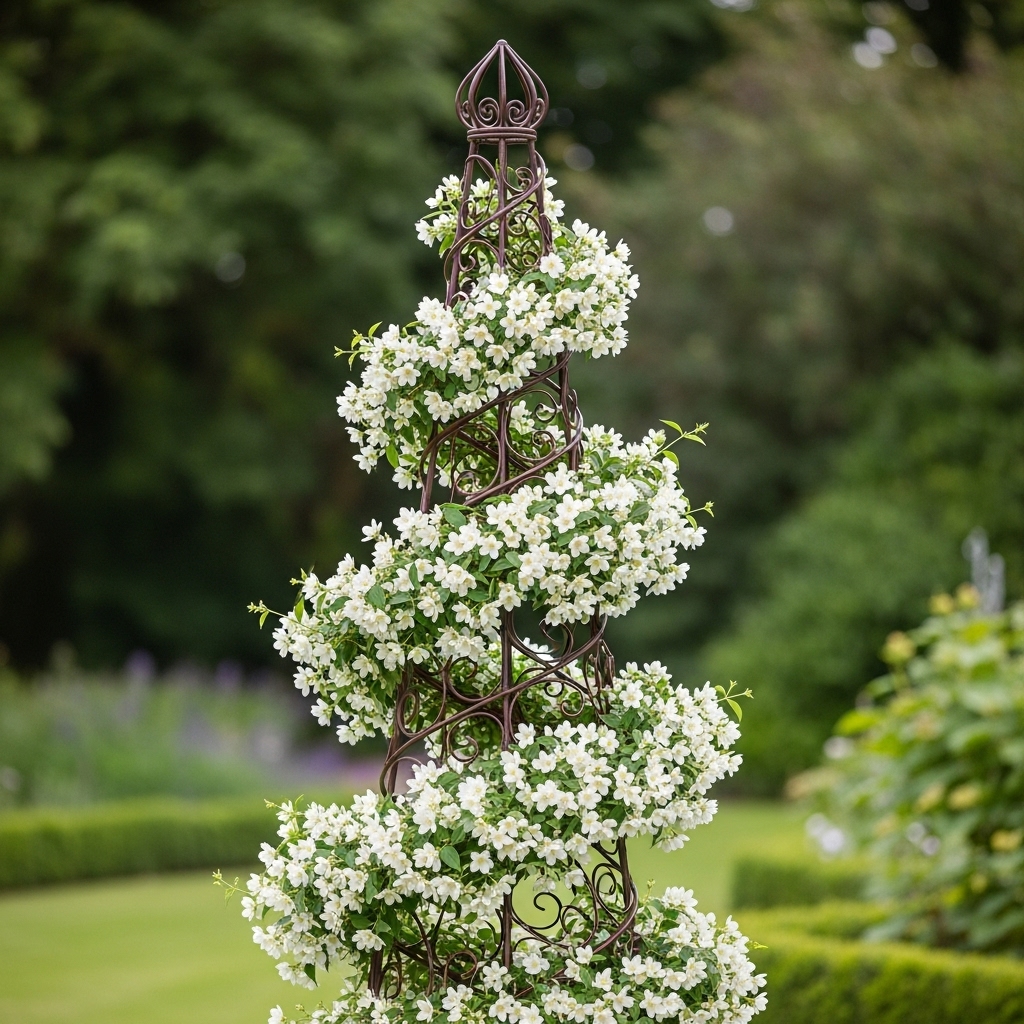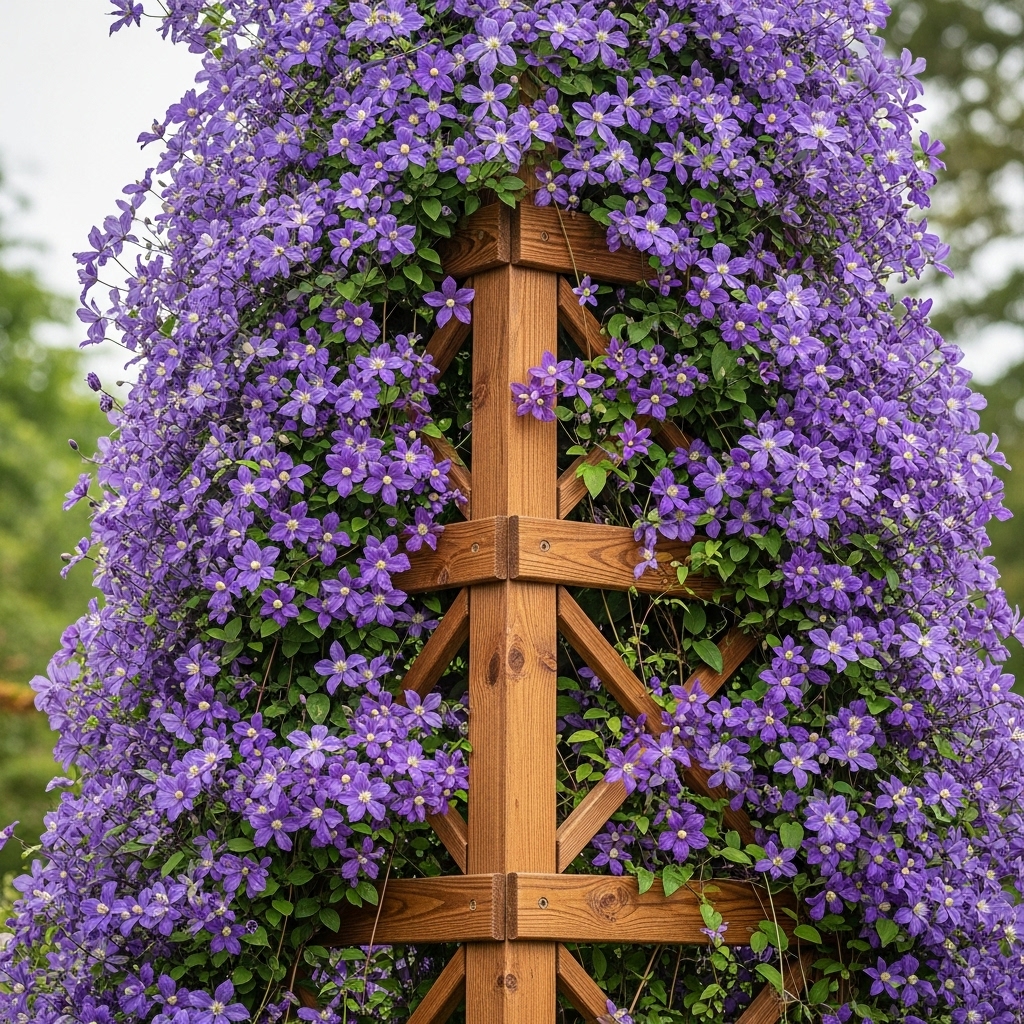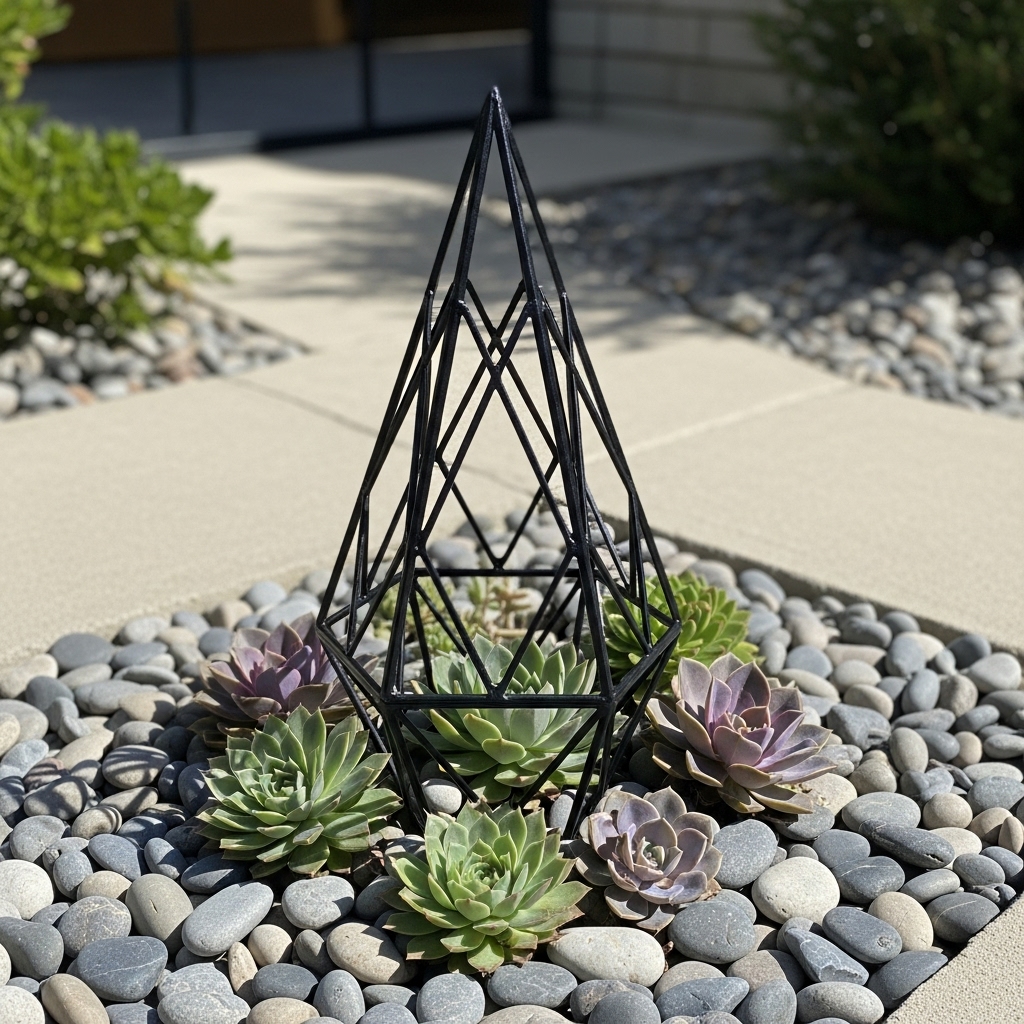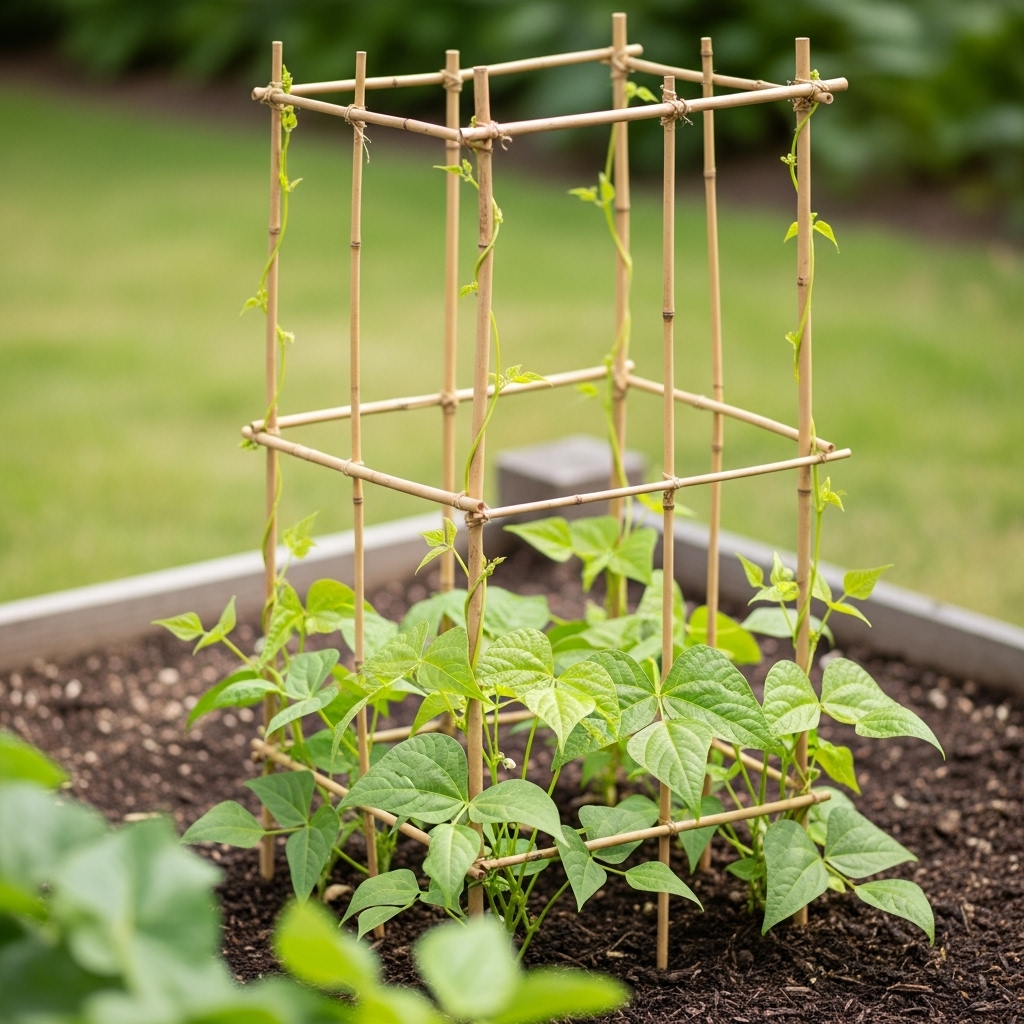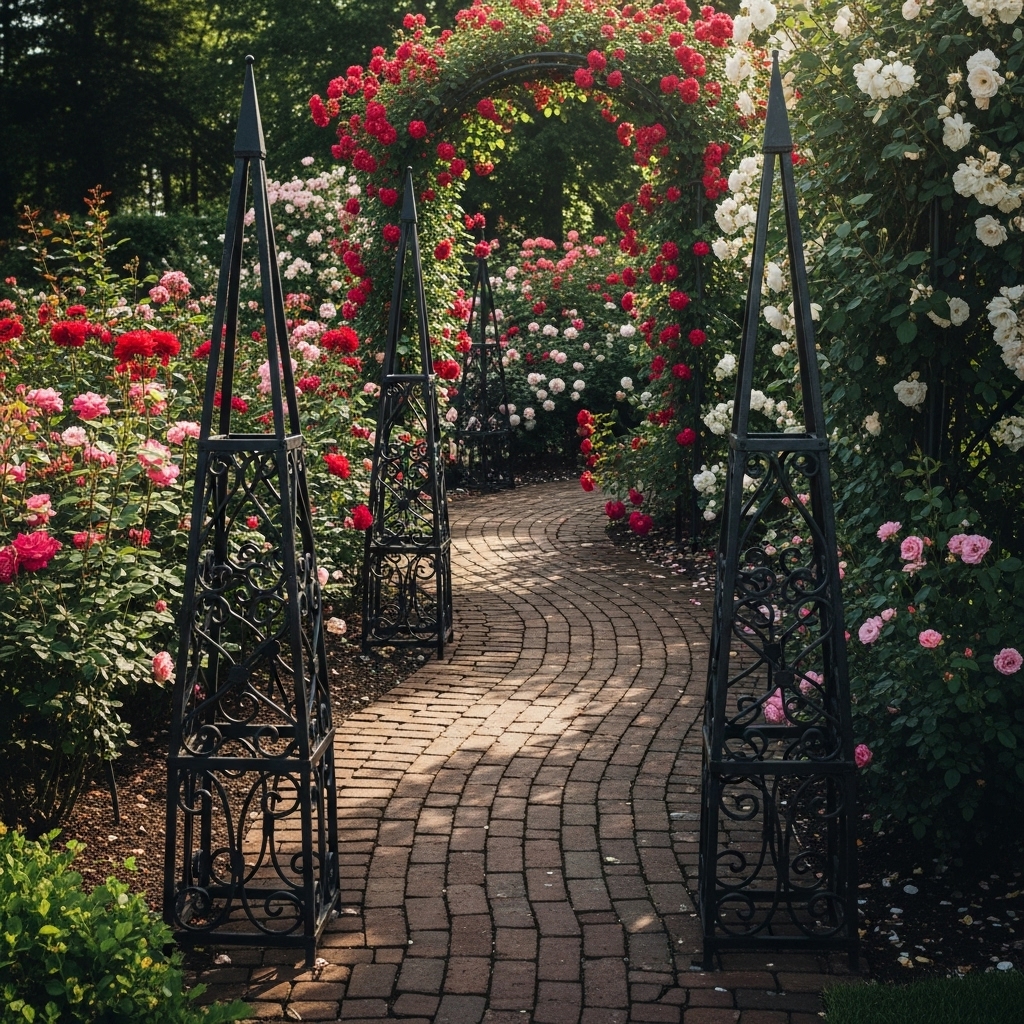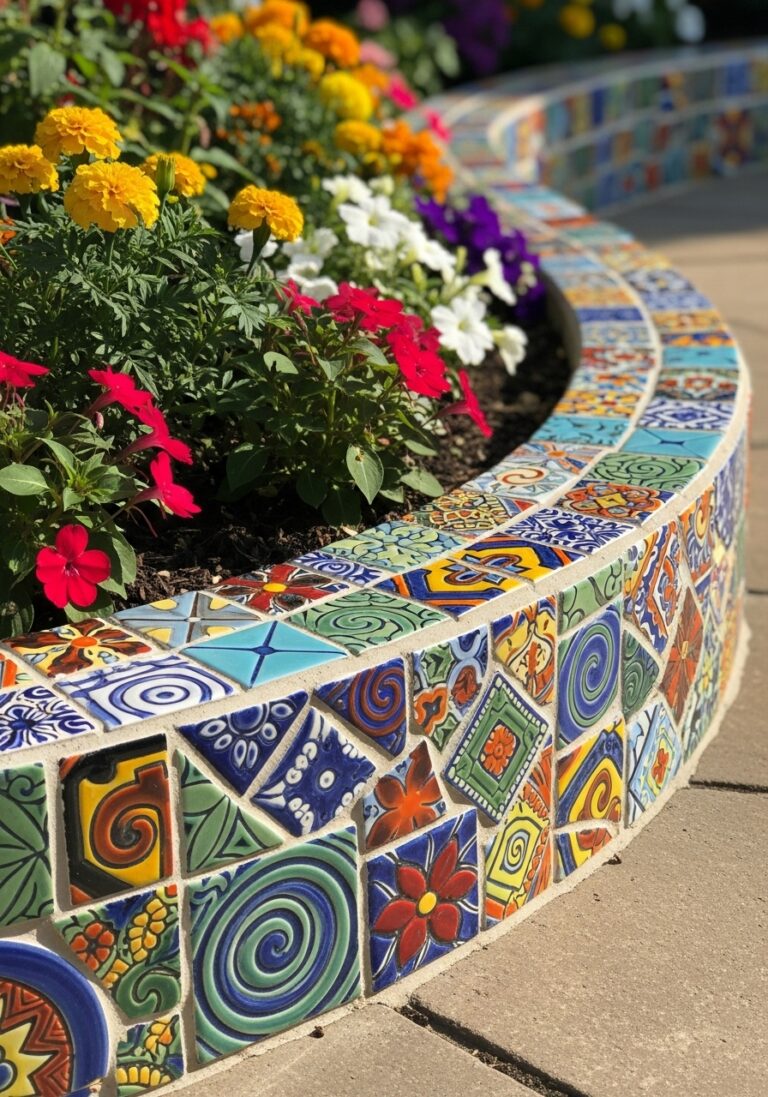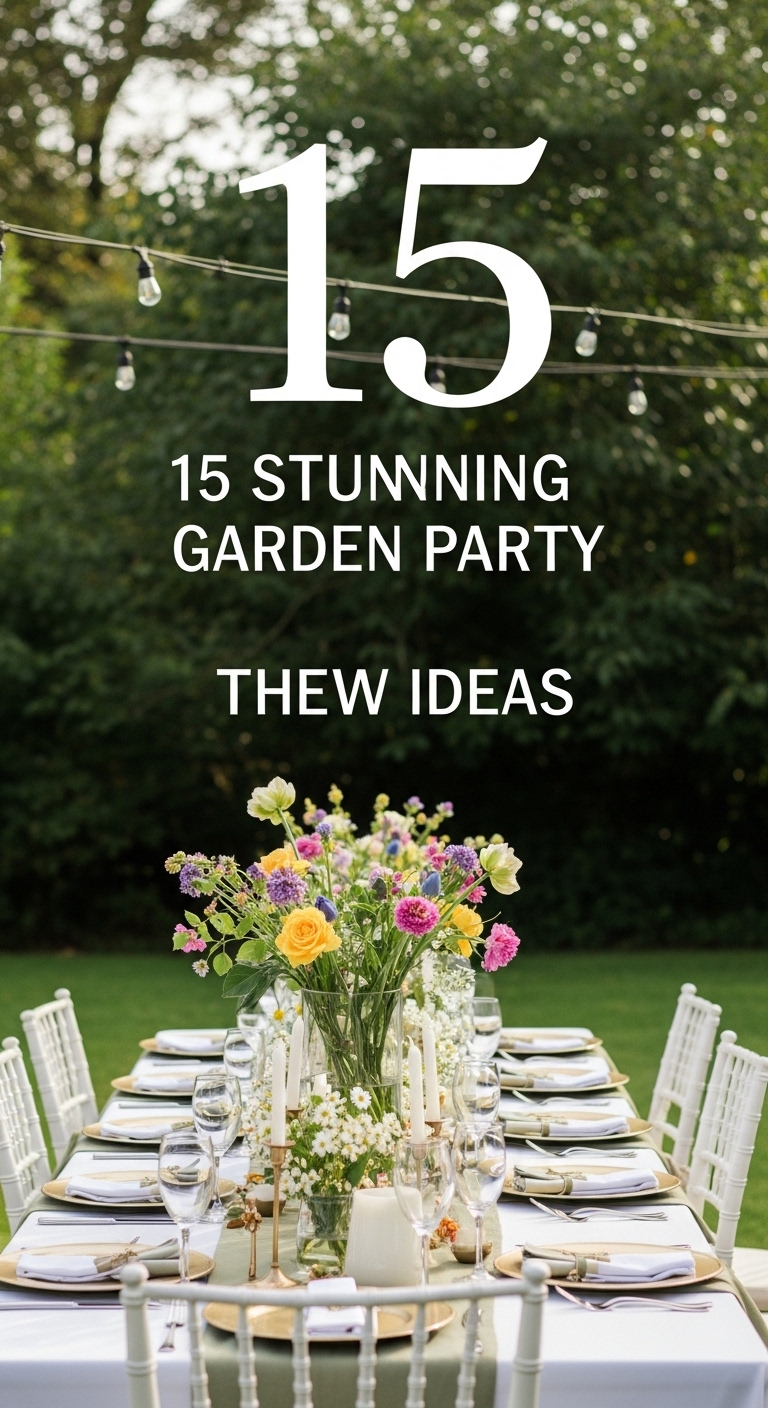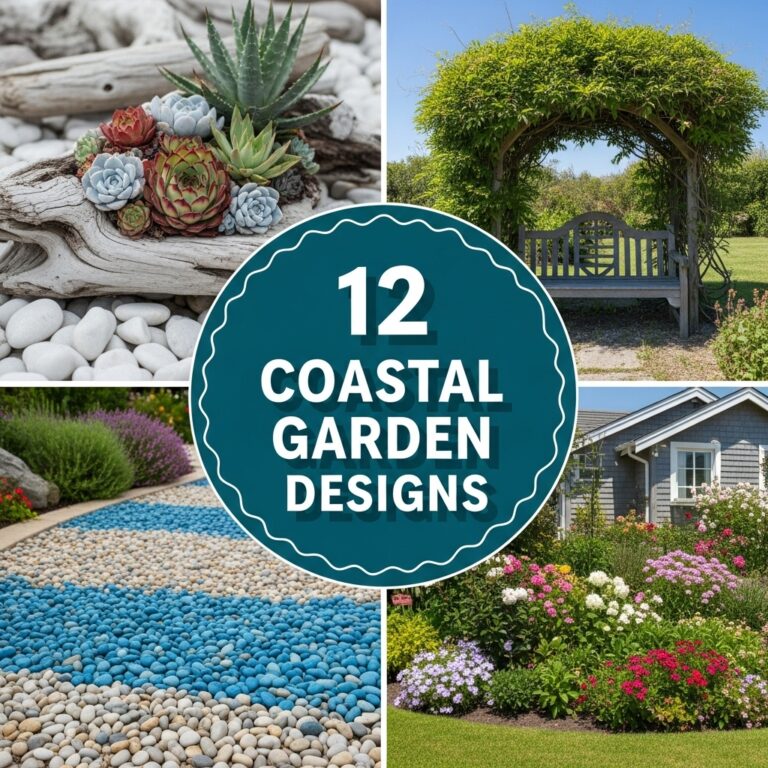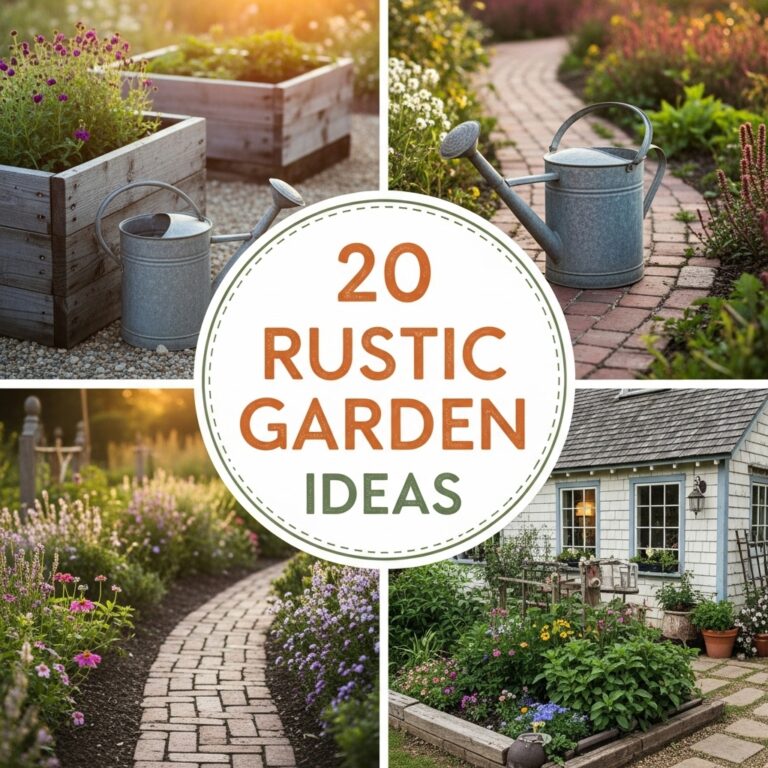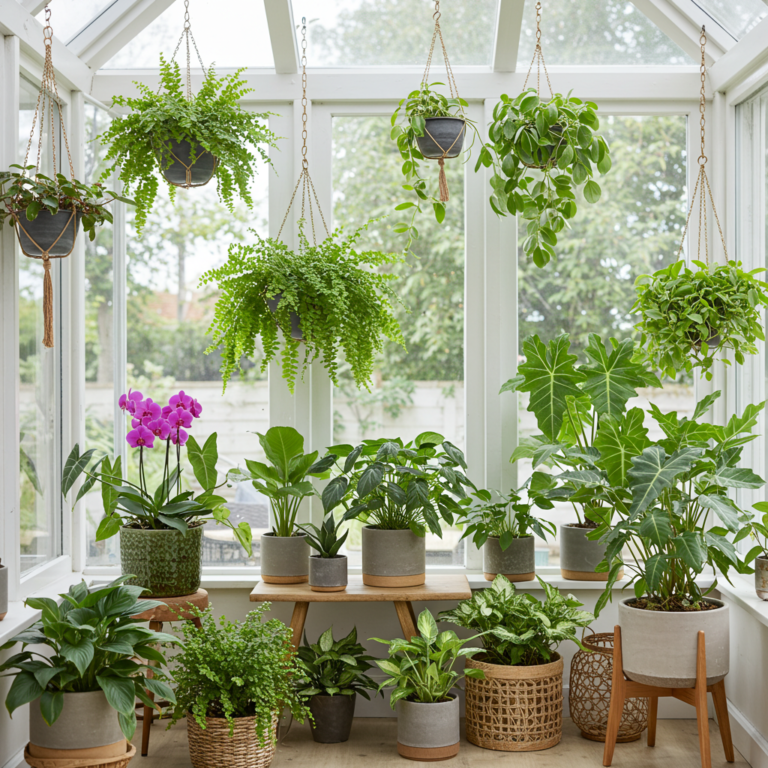19 Garden Obelisk Ideas That Will Make Your Backyard Look Amazing
Garden obelisks are a stylish and functional way to enhance your outdoor space. They help support climbing plants, add vertical interest, and serve as eye-catching focal points. Whether you love rustic charm or modern designs, there’s an obelisk idea here to fit your garden’s personality.
Let’s explore 19 creative and beautiful garden obelisk ideas that can instantly elevate the look of your backyard.
1. Classic Wooden Obelisk for a Timeless Look
Wooden obelisks are among the most popular and traditional options for any garden. They are usually made from cedar, pine, or teak and can be painted or left natural. These obelisks pair well with roses, clematis, or other flowering vines. Their soft, rustic look fits beautifully in cottage, farmhouse, and traditional gardens. You can place them in flower beds or near garden entrances for maximum visual impact.
2. Durable Metal Obelisks for a Modern Touch
If you’re looking for something strong and long-lasting, metal obelisks are a great choice. Wrought iron or powder-coated steel gives your garden a sleek, structured look. They work well in formal or modern outdoor settings and provide great support for heavy vines like honeysuckle or grapevines. Choose black, bronze, or rusted finishes depending on the theme of your garden.
3. Colorful Painted Obelisks to Add Personality
Painting your obelisk in bold or soft pastel shades is an easy way to bring fun and color to your garden. Bright blue, yellow, mint green, or coral can turn a simple obelisk into a playful garden feature. These painted versions work well in kids’ gardens, whimsical flower beds, or boho-style backyards. Match the colors to your garden decor or flower colors for a cohesive look.
4. Mini Obelisks for Potted Gardens and Balconies
Not every garden has ground space. Mini obelisks are perfect for pots and container gardens on balconies, patios, or small backyards. These smaller versions support herbs, dwarf tomatoes, or climbing flowers like sweet peas. You can group several pots with different colored obelisks for a vibrant, compact garden display.
5. Rustic DIY Obelisks Made from Garden Twigs
If you enjoy DIY projects, consider building an obelisk from natural branches or twigs. This rustic style blends beautifully into naturalistic gardens and gives your space a handmade, earthy vibe. Use strong, flexible branches and tie them with twine or jute rope. They’re perfect for supporting lightweight vines or simply as a sculptural garden accent.
6. Wrought Iron Spiral Obelisks for Elegant Style
A spiral-shaped obelisk is an eye-catching twist on the traditional design. The twisting lines add movement and elegance, making them look almost like garden sculptures. These work well even without plants and become more beautiful as climbing vines like jasmine or black-eyed Susan vines fill in.
7. Tall Trellis Obelisks for Vertical Drama
Taller obelisks act as both plant supports and trellises, especially useful if you want to grow heavy or tall climbers. These are ideal for narrow gardens where ground space is limited. They also help draw the eye upward, making your backyard feel larger. Choose a style that matches your garden’s vibe — wood for classic gardens or metal for modern ones.
8. Obelisks with Birdhouses for Wildlife Appeal
Adding a birdhouse to the top of your obelisk is a creative way to welcome birds while decorating your garden. It makes your obelisk multi-functional — both a plant support and a wildlife haven. This is great for eco-friendly gardeners who want to encourage pollinators and bird visits.
9. Geometric Obelisks for Modern Gardens
Geometric obelisks come in angular shapes like triangles, hexagons, or diamonds, making them perfect for minimalist and contemporary gardens. These sharp-edged structures look stylish on patios or gravel gardens and create strong visual contrast when paired with soft, flowing plants.
10. Eco-Friendly Bamboo Obelisks
Bamboo obelisks are lightweight, sustainable, and budget-friendly. They’re ideal for vegetable gardens, especially for growing beans, peas, and cucumbers. They also suit natural garden themes, Asian-inspired landscapes, or raised garden beds.
11. Formal Garden Obelisks for Symmetry
Formal gardens often rely on symmetry and structure. Matching obelisks placed in pairs or rows can give your garden a clean, organized appearance. This method works well in rose gardens, boxwood hedge layouts, or entry pathways. Choose sleek metal or painted wooden designs for a refined finish.
12. Lighted Obelisks for Evening Charm
Obelisks can glow beautifully at night when wrapped in fairy lights or solar string lights. This transforms them into glowing garden features after dark. They’re perfect for patios, decks, or areas where you host evening gatherings.
13. Obelisk Centerpieces for Herb Gardens
Place an obelisk at the center of a circular herb garden to create a focal point. It adds height and structure while also supporting fragrant climbing herbs like rosemary, thyme, or mint. You can grow edible flowers around it for even more beauty.
14. Decorative Obelisks as Sculptural Art
Some obelisks are so beautiful that they don’t need any plants. Whether metal, ceramic, or carved wood, decorative obelisks can act like garden sculptures. Use them in dry gardens, gravel landscapes, or formal flower beds as permanent focal pieces.
15. Rope-Wrapped Obelisks with Coastal Flair
To add a nautical or coastal theme, wrap rope or jute around your obelisk. This works best on wood or metal frames and adds texture and warmth. Pair it with white flowers or beach-themed decor for a laid-back seaside garden vibe.
16. Triangular Pyramid Obelisks for Unique Shapes
Instead of the classic square or pointed shape, try a triangular pyramid obelisk. These designs feel modern and architectural. Use them as a central garden piece or line them along pathways for a unique landscape element.
17. Extra-Tall Obelisks for Large Spaces
If you have a spacious backyard, go big! Extra-tall obelisks create drama and grandeur. They’re ideal for strong climbers like wisteria, climbing roses, or passion flowers. Their height also helps fill vertical space in open gardens.
18. Recycled DIY Obelisks from Old Tools
Give old garden tools or materials a second life by creating an obelisk from them. Old rakes, pipes, or window frames can be repurposed creatively into unique garden features. It’s a sustainable, budget-friendly, and artistic approach.
19. Obelisk Pathway Markers for Structure
Lining garden paths with small matching obelisks helps guide the eye and define walkways. It also adds structure and balance to flower beds. You can use lighting or flowering vines for added visual effect along the trail.
Final Tips for Using Garden Obelisks
- Choose the right material based on your climate and garden style — wood for rustic, metal for modern, bamboo for natural settings.
- Pick suitable climbing plants such as roses, peas, beans, clematis, or jasmine.
- Place obelisks strategically where they will be most visible — entrances, center of flower beds, or along walkways.
- Add lighting for magical nighttime appeal.
- Use odd numbers of obelisks for a more natural and balanced garden layout.
Garden obelisks are simple structures with big impact. Whether DIY or store-bought, rustic or sleek, adding an obelisk to your garden can elevate its design, create depth, and provide essential support for climbing plants. Start with one — and you might soon find yourself wanting more!

